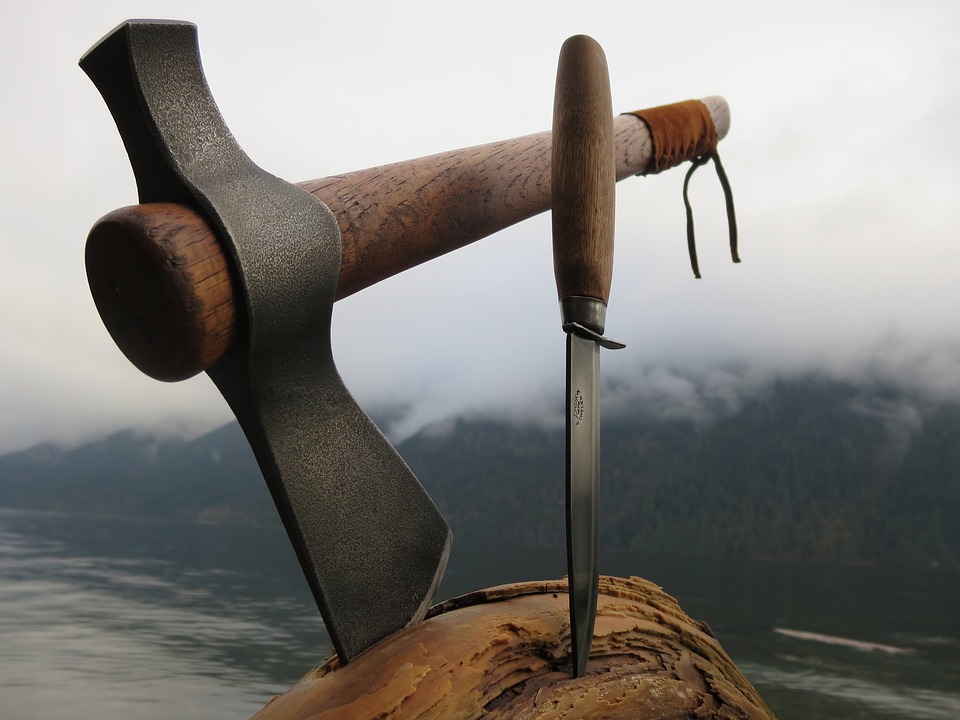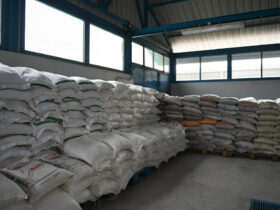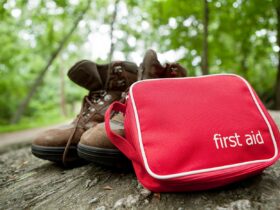Imagine what it would be like if you’re forced to leave your home and survive in the wilderness for an indefinite period.
While some might say this is the “dream” of preppers all over the world, lack of preparation could put you in some tough positions.
This is where the INCH bag comes into play.
If you don’t know this already, let me add that INCH stands for “I‘m Never Coming Home“. That doesn’t mean you will never see home again. But it’s all about preparing to enable you and your family to survive through the worst.
The point is, we are talking about long-term wilderness survival here. That means living in a shelter, hunting or gathering your own food, and literally taking your life into your own hands.
Honestly, it takes a lot of thought and experience to imagine the realities of such a scenario.
To make things easy for you, here’s our in-depth guide for assembling an INCH bag. Consider this as an INCH bag checklist you can use if things head south.
What is an INCH bag?
Quite simply, it’s your last resort when the apocalypse hits.
Let’s face it. Even if your emergency shelter is fully equipped and secluded, you need to be prepared for an SHTF calamity that can wipe it out. A fire or a nuclear attack will leave you with no other choice but to head out with your family. As a prepper, you simply can’t ignore that possibility.
The INCH bag essentials are your only support for survival outside the comfort zone. When you need to carry it out, you really might never return home. So it’s all about essential items and tools without which you won’t last in the wild.
But beware:
That doesn’t make INCH bags a stuffing sack for a variety of items. You need to carefully consider the various aspects of food, water, clothes, and gear and pick the necessary items. Besides, you need to account for redundancy. If you lose one item, you can depend on another to survive.
The INCH bag is not for carrying food, water, or fuel for long periods. But it will have the tools that will help you to survive, build a shelter, and manage on your own in the wilderness.
Choosing an INCH Bag
Unless you’re a true survivalist, the INCH bag isn’t something you will be carrying on your back for long periods. But by sacrificing portability and mobility, you are increasing your chances in a long-term survival scenario. Also, it gives you more confidence and self-reliance in handling critical situations.
Keep in mind, a simple backpack won’t serve the purpose of an INCH bag. You will need a robust bag designed to handle emergency situations.
Here are some important factors to consider while choosing your INCH bag.
Weight
With more gear survival tools, your INCH bag weight will be on the higher side. And it’s simple. The more weight you carry, the more energy you spend. Moreover, exhaustion and tiredness can lead to under-performance. In a survival scenario, that can make the difference between life and death.
So you need to choose the size and weight of the bag depending on your physical abilities. It also involves balancing the durability and redundancy of the gear with the weight factor.
Pick objects that are lightweight but don’t compromise durability. Ideally, an INCH bag that weighs between 20-25% of your body weight should be good enough.
Durability
Frankly, you can’t expect to survive in the wild with low-quality products. The items in an INCH bag should last for at least six months with rough use. Most consumables are not durable items. So they usually don’t find a place in the INCH bag.
The first thing is to choose a bag that will not fall apart in a few weeks. Make sure to choose rugged materials with a good level of waterproofing. While it needs to be tough as nails, choosing a lightweight design is also essential.
Support
Comfort is another factor you shouldn’t ignore. You don’t want rough edges digging into your back or collar bones while struggling for survival. At the same time, the bag should offer the right support to make the weight easier to carry.
A military-grade bag with an external frame for proper weight distribution is a good choice.
The frame will distribute the weight over the back muscles and remove excess stress from your shoulders. It will also prevent the bag from deforming when heavily loaded.
Interior Design and Color
When it comes to volume, an INCH bag can be anywhere between 60 to 80 liters. One important aspect of emergency preparedness is organizing a wide range of items properly. Proper organizing ensures you will have no trouble finding the right item when needed.
Choose a bag with the right number of pockets and compartments to organize the gear. A bag with a single large pocket and multiple smaller ones will not do the trick. Even so, picking a bag with too much space that you will never use is a poor choice.
Beyond that, we will also advise against buying flashy and brightly colored bags. Such colors will attract attention and make you an easy target in the wild. Choose colors like black, grey, brown, or green, that blend easily with the surroundings.
INCH bag and Bug Out Bag – Key Differences
You might be thinking- what about my bug out bag?
If you have that ready, great. But there are some differences between the BOB and the INCH bag.
A bug out bag is for short periods of survival which can range up to a week. It can help you to get across treacherous terrains in an SHTF scenario and reach your home or bug out location.
In most cases, the contents of a bug out bag are based on your specific needs and preferences. That makes them relatively light and easy to carry. Usually, they are kept within easy reach for use on short notice.
However, an INCH bag is prepared for surviving for an indefinite period of time. In a true disaster scenario, you will have to evacuate your home. It may turn out you have no destination to head towards and will have to embrace the life of a nomad.
Basically, an INCH bag is a heavier and bigger form of the bug out bag as it contains more essential items. Unlike a bug out bag, you wouldn’t be carrying the INCH bag on your bag for long hours over long distances. It will be too heavy for that. The overall durability of the INCH bag should also be better.
During an emergency, you can carry both the BOB and the INCH bag with you. If you decide to leave the BOB behind, make sure all the emergency items in it are included in the INCH bag.
The Complete INCH Bag List
If you are a prepper you probably have a good idea about what to pack in an INCH bag. While some items will be for direct use, others will help you to make the best out of the natural resources.
We have classified the INCH bag contents based on some primary categories.
Take a look.
Shelter
Finding the right shelter in the wilderness isn’t easy. Chances are, you will need to build one. While working on that, you can use a tent as a shelter.
A Tent or Tarp
Building a proper shelter that can protect you from wind and rain can take some time. In the meantime, you can use an ultralight tent to keep yourself protected from the elements. Once the shelter is built, the tent can serve as additional protection against cold.
A tarp is a simpler option, but it won’t protect you from the bugs. Another option is to carry a Bivy Sack. They offer a practical and waterproof shelter for minimalist users. However, bivy sacks are meant for solo users.
The size of the tent you choose will depend on the number of members in your family. Generally, a 3 or 4 person tent is a good choice in terms of size and portability. Durability and weather resistance of the tent are two other aspects you need to consider. Overall, a 3-season tent is the best choice.
A Sleeping Bag
A sleeping bag offers good protection against cold but can be too heavy for an INCH bag. An ultralight synthetic sleeping bag can be a good choice for long-term survival. Make sure you pick a bag rated for the lowest winter temperatures that you might encounter. The trick is to find the perfect warmth-to-weight ratio to serve your purpose.
Other options include packing a blanket at the bottom strap of your bag. Mylar blankets are a practical choice but they are only good for one use.
Tools
The right tools are essential to survive in the wild. These are items that need to be durable and reliable. When you are miles away from civilization, replacing the functionality of a damaged or lost tool isn’t easy.
Survival Hatchet
A trusty hatchet is one of the must-haves you need to pack. It’s a versatile tool that can be used for splitting wood, chopping down trees and branches, and clearing brush. One advantage of a hatchet is its lightweight design and excellent portability. Another thing is it can be used one-handed, unlike a large ax.
Hatchets come at a wide range of prices based on their quality and manufacturing process. Machine-made hatchets with a metal or fiberglass handle are an affordable choice. Wooden, handcrafted hatchets are pricier. You can pick a camping hatchet or a survival hatchet for your INCH bag.
Machete
A machete is a badass tool that can serve a variety of purposes other than jungle slashing or bushwhacking. You can use it for skinning games, scaling fish, opening cans, pruning branches, and also for self-defense.
Machetes come at numerous varieties and prices and choosing the best survival machete can be exhausting. It’s best to choose a machete with a high-carbon steel blade and a full tang construction for better durability. The grip should be comfortable enough for swinging. Also, choose a good quality sheath to keep the blade fully covered when not in use.
Survival Shovel
When it comes to digging a firepit or shoveling snow with the least effort, you need a survival shovel. Besides, they are very useful for a wide range of activities within a campsite. If one of your team members is caught in sticky mud or a snow avalanche, the shovel can also act as a rescue tool.
Most survival shovels are compact and light enough for easy storage in the INCH bag. A few of them even come with a folding design. Quite a few survival shovels are designed as multi-tools and they come with features like a fire-steel, fishing spear, ice ax, or a compass.
When durability is your priority, choose a survival shovel with a carbon steel head that’s powder-coated. A polymer handle is the best choice for outdoor use.
Survival Knife
A top-grade survival blade is one item you can’t miss packing. From finding food to building a shelter, a knife has a role to play in every survival activity. Pick a high-quality, full tang blade between 4 to 6 inches in length. A durable and comfortable grip will make sure that you’re prepared to tackle anything.
A Multitool
Carrying a survival plier is as good as carrying a mini-tool box in your pocket. It’s extremely effective for pinching, grabbing, or twisting small objects. Quite simply, an invaluable item when you need to repair or reuse items in the wilderness. Think about the durability of the product and the weight, before adding it to your INCH bag.
Water
Water is one of the most important aspects of outdoor survival. When you are constantly on the move in the wild, finding a proper water source at each step will be a challenge. Once you have found it, you need to purify it from the nasty elements.
Water Purification Tablets
These tablets are one of the easiest ways to purify water from pathogens. You need to add a sufficient number of water purification tablets in the INCH bag to last for months.
Most tablets can purify between 0.75 to 1 liter of water. Based on your daily consumption, you should carry at least six months of supply with you. You can also toss a few Lifestraw filters in the bag for emergency use.
Water bottle
Adding a 1-liter aluminum or stainless steel water bottle in your inch survival bag is highly recommended. Not only can these bottles take a beating, but they can also withstand freezing temperatures. Moreover, you can easily collect and boil water in them when needed.
While some outdoor enthusiasts prefer using hydration packs, they aren’t a durable option for a survival situation.
Tools for Procuring Food
Food procurement is a vital aspect of long-term survival. Be it hunting, fishing, or foraging, you need to gather the right amount of calories to keep going. So here are some important tools that are a must in any inch bag checklist.
Compact Fishing Rod, with Accessories
A compact and durable fishing rod is a great way to put food on the table when you are near any water body. Modern rods are made of high-quality materials that last long and can take a beating.
Ultralight rods combined with a small reel can help you to catch trout and freshwater bass from small streams and lakes. Pick strong and big hooks which offer more durability.
One excellent choice is picking a Yo-Yo reel that combines around 20 feet of fishing line with a snap swivel. You can simply place it and the spring action will automatically set the hook when a fish takes the bait. Moreover, it can also be used for hunting small game.
Also, you need to select a fishing line of the right strength. It’s best to choose braided lines as they are thicker and stronger. Spectra and Dyneema lines offer higher tensile strength while keeping the weight low.
While fishing near the shore a line of 35-pound strength is good enough. Note, fishing lines are easily lost or torn, so you need to buy lots of them. Anywhere between 400 to 500 yards should be good enough.
Survival Slingshot
This is an excellent tool for hunting small and big games. The best part is, you won’t run out of ammunition as you’ll always find rocks in the field. Survival slingshots with archery bands can even shoot arrows.
While picking a slingshot make sure it has a durable and comfortable handle. Tubular rubber bands have more longevity than flat bands. A slingshot with an arm brace will help in improving your accuracy. But it shouldn’t make the device too heavy.
Survival Bow
A quality survival bow is a must in any INCH bag. When it comes to survival bows type, you can choose from a takedown, recurve, or longbow. Since the components of a takedown bow can be easily broken down, it’s the best choice for portability. Note, crossbows are heavier and not so reliable in the long run.
Carrying a few spare strings is also important. Also, pack 8 to 10 carbon arrows that are light and durable. Arrow points are available in numerous styles and shapes. Blunt points are a good choice for hunting rabbits and squirrels. For larger games choose high-quality broadhead points.
Seeds
When it comes to long-term survival, a survival garden can be your best bet. A thriving garden can be a dependable source of nutrients within a short span of time. In order to build the garden, you need a good seed bank. Radish, sweet potatoes, carrots, cabbages, tomatoes, soy, and broccoli are some of the best seeds you can pack.
Clothing
Packing the right clothing among your INCH bag essentials is extremely important. Consider the various weather conditions you can face and pack items that are lightweight and versatile.
Rain Jacket and Pants
High-quality rain gear is something you must carry. A good jacket should be made out of a breathable waterproof layer. Gore-tex jackets are a great choice but they aren’t the best in terms of durability.
Other options include waterproof breathable membranes which are priced lower. A denier rating of 80 or higher should be good enough for rough use. One thing is, you can use these jackets as an outer layer over your winter jacket.
Pants need to be of robust materials as they will have to withstand heavy wear. Materials rated between 80 deniers to 100 deniers should be good enough in terms of durability.
Jacket
Packing a good quality jacket in an INCH bag is essential. It’s best if you can pack a medium and a heavy jacket to beat the cold. That way, you can use layering to adjust to the varying temperatures during the day.
Fleece or wool are two of the best materials that provide a great combination of warmth and durability. They are also more affordable than down jackets.
Outerwear
Long-sleeved shirts that dry quickly are a practical option. You need to choose the right fit to work comfortably in them. You can pack two of these in the INCH bag. Apart from that, add two sweatshirts and a thermal shirt.
Hiking pants are a durable and versatile option and offer excellent flexibility. While you need the right amount of ventilation for summer use, look for a fabric that also provides some degree of warmth.
Shoes
A lightweight hiking shoe is a good choice when you are looking for versatility. If you want durability, a leather hiking boot is a solid option. A sandal and shoe hybrid can be a good choice as a backup pair and also for summer use.
However, it’s difficult to find a lightweight shoe that serves well below freezing temperatures. So we suggest using additional protection for your feet. Apart from functionality, the durability of the boots is an important factor. Also, make sure you choose the right sole type that offers good traction over tricky terrains.
Socks and Gloves
You need to carry multiple pairs of socks to protect your feet from the cold and prevent blisters. Pack socks made from both thin and thick materials for use in hot and cold weather. Work gloves made from leather are a durable option for use in all seasons. Pack two pairs of gloves as they tend to wear out fast with heavy use. In addition, add a pair of cold weather gloves to beat the winters.
Base Layers
The layering of clothing is extremely important to tackle cold temperatures. When it comes to base layers, wool and synthetic are good choices. Cotton is more breathable but it extracts heat from the body when wet. Synthetic is more durable and offers good insulation.
Head Cover
A hat with a 360° brim is essential to protect your head from the heat. Make sure you choose a breathable membrane that allows the moisture to escape. You can combine your hat with a head net to fend off the bugs. A bandana is another versatile clothing item you can pack. It’s equally good in both summer and winter.
Navigation
Navigation tools are a must to guide you through tricky terrain. Here are three of the most important items you need to pack.
A Survival Watch
A survival watch isn’t just about keeping track of time, but also about providing reliable information just when you need it. Most watches offer a combination of the compass, altimeter, barometer, and thermometer in a durable design that can take almost anything. We suggest you pick a watch powered by solar energy. That way you won’t have to depend on batteries.
A Compass
Even if your watch has a compass, it’s best to carry a lensatic or mirror compass as a backup. A top-grade survival compass will help you to move on even when your GPS batteries run out of power. Besides they are maintenance-free units that offer a high level of accuracy. Choose a design that’s compact and lightweight to ensure easy use.
Topographic Maps
Including a few topographic maps (1:250,000) of the entire area around you in the INCH bag is a smart choice. Add a few detailed maps (1:50,000) of the areas you are most likely to travel to and mark some of the trails and structures visible from satellite images. That will make scouting for food and water safer and easier. It’s best to carry plastic maps as paper ones will not last in the wild.
Fire
You need to build a fire for safety, comfort, and also for cooking. So any inch bag for survival should contain the tools for starting an emergency fire
Ignitor
You can use lighters, Ferro rods/fire steels, or magnifying glass as a fire starter. An electric lighter is the best option since you won’t be dependent on fuel. A small and durable Ferro rod can provide years of dependable service. Using a six-inch magnifying glass is one of the best ways to light a fire during the day.
Tinder and Kindling
You can collect small twigs and sticks to act as tinder. But dry tinder can be difficult to find in wet weather. So packed tinder that uses smaller fibers like cotton or larger fuel cubes, should be included in your INCH bag.
Fuel cubes are more expensive but can be used in wet conditions. The high heat they generate will also allow you to dry the natural tinder you have collected. Best keep a mixture of various forms of tinder in the INCH bag.
First Aid Supplies
First aid is one aspect you can’t afford to overlook. In the wilderness, the right first aid can be a lifesaver. Make sure you have the items from this INCH bag list on you when the SHTF.
First Aid Kit
Choose a lightweight survival first aid kit that can help you tackle the worst possible injuries as well as smaller cuts. It should contain all the necessary items including bandages, wipes, and gauze swabs. Include a roll of duct tape- a very useful item for fixing bandages.
Medications
Antibiotics can save your life in case of an infection that takes a serious turn. So pack a few survival antibiotics along with an antibiotic cream for treating wounds.
Other than that, pack a few over-the-counter painkillers like acetaminophen or ibuprofen that can provide relief from painful bug bites. Oral antihistamines should also be packed for bites that itch.
Miscellaneous Items
Solar Lantern
A pocket-sized solar lantern is a perfect choice for any location without a power source. When you want a lot of light spread over a larger area, these lanterns are a dependable choice. Things to look for are high-quality LEDs and a relatively short charging time.
Solar Headlamps
Headlamps are great while traveling at night or for working in dark spaces. The big advantage is they are hands-free. While picking a lightweight headlamp is important, durability and weatherproofing are two other factors that need to be considered.
A Solar Charger
A solar charger is a great way of charging your smartphone and other gears like a GPS unit. They come with a rechargeable battery pack that gets charged as solar rays are absorbed by the panel. However, you need to keep the panel away from hot surfaces and not charge your devices when it’s under the sun.
Utensils
The primary utensil in an INCH bag should be a 1-liter aluminum or stainless steel pot. Titanium is a good choice but it’s expensive. Don’t choose Teflon-coated pots as they get damaged when overheated. The pot will be the primary utensil for cooking. Apart from that, you can pack a few plastic spoons and forks.
A Hand-cranked Radio
A hand-cranked emergency radio is another important item that will keep you updated with the latest developments in the world. One advantage of a hand crank device is, you can power it up any time during the day. A radio with a USB charger will also help you to power up your phone during emergencies.
Repair Kit
A small repair kit can always come in handy to keep your gear in good condition. Some important items to include in the kit are duct tape, rubber cement, fabric, wire, epoxy, and a sewing kit,
Conclusion
Our complete INCH bag list is ready for you.
Fact is, it’s your INCH bag and you need to consolidate it based on your requirements. Initially, the process of deciding on the content can be difficult. But you need to prioritize and leave out anything that’s bulky, non-essential, and luxurious.
It’s hard to imagine the collapse of civilization around you. But that might happen without notice.
In that case, this is the bag that will determine your chances of survival. So make sure each item you choose will function just the way you want it.
That’s all that really matters.
Source link: https://persurvive.com/preparing/inch-bag-list/ by Coty Perry at persurvive.com






